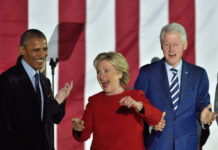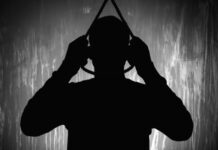
In a remarkable display of fortitude and compassion, Diane Foley, the mother of slain journalist Jim Foley, has taken the extraordinary step of engaging in face-to-face dialogues with Alexanda Kotey, a member of the notorious ISIS cell known as the ‘Beatles.’ These interactions, which took place in a Virginia courthouse conference room, were part of her relentless pursuit to find where her son was buried and to seek some form of reconciliation.
Diane Foley’s encounters with Kotey, who is serving eight concurrent life sentences, are a testament to a mother’s love and her desire to understand the circumstances that led to her son’s tragic death. Despite previously criticizing the Obama administration for its failure to prevent her son’s beheading, Foley sought to ‘build a bridge’ with Kotey, hoping to take a ‘tiny step’ towards reparations.
Diane Foley spent hours in a windowless courthouse conference room talking with the Islamic State militant convicted in her son’s murder.
They talked about faith, redemption, family and forgiveness.
She also had an additional question she wanted answered https://t.co/GcnS6K9Sad
— Eric Tucker (@etuckerAP) February 8, 2024
The conversations between Foley and Kotey were laden with emotion and complexity. Kotey expressed regret over the killing and even shed tears when discussing an HBO documentary about Jim’s life. He conveyed his own losses—freedom, family, and country—while Foley mourned the loss of her son. This poignant exchange highlighted the profound impact of violence on both the victims and the perpetrators.
Foley’s decision to engage with Kotey is a rare occurrence in the justice system, where victims’ families seldom have the opportunity for meaningful interaction with those convicted of harming their loved ones. Her actions challenge us to consider the power of empathy and dialogue, even in the face of unspeakable atrocities.
James Foley, a freelance journalist, was captured & beheaded by ISIS in 2014. Now his mother Diane Foley has spent time talking to his killer in a US prison. She will be interviewed @frontlineclub on Feb 22. pic.twitter.com/CTSAC4wwfE
— Jill Nicholls (@JillNicholls01) February 4, 2024
The meetings also provided Foley with a platform to memorialize her son, who was known for his curiosity, energy, and strong moral compass. In contrast, Kotey, shackled at the ankles, shared his perspective as a soldier during a time of war, revealing his resentment towards U.S. actions in the Middle East.
Kotey’s admission that he did not know the location of Jim’s body leaves a painful void for the Foley family, who continue to seek closure. However, Kotey’s acknowledgment of the pain caused to the Foley family and his ambivalence upon learning that Jim’s brother was a U.S. military pilot suggest a complex individual grappling with the consequences of his actions.
The story of Diane Foley’s encounters with Kotey challenges us to confront the human capacity for both cruelty and compassion. It raises questions about the nature of justice, forgiveness, and the possibility of redemption, even for those who have committed heinous acts.
As we reflect on this extraordinary narrative, it is crucial to remember the enduring legacy of Jim Foley—a man who dedicated his life to bearing witness to the suffering of others in conflict zones. His mother’s courageous efforts to engage with one of his captors honor that legacy by continuing to shine a light on the darkest aspects of humanity, while also seeking a path toward understanding and, perhaps, peace.











